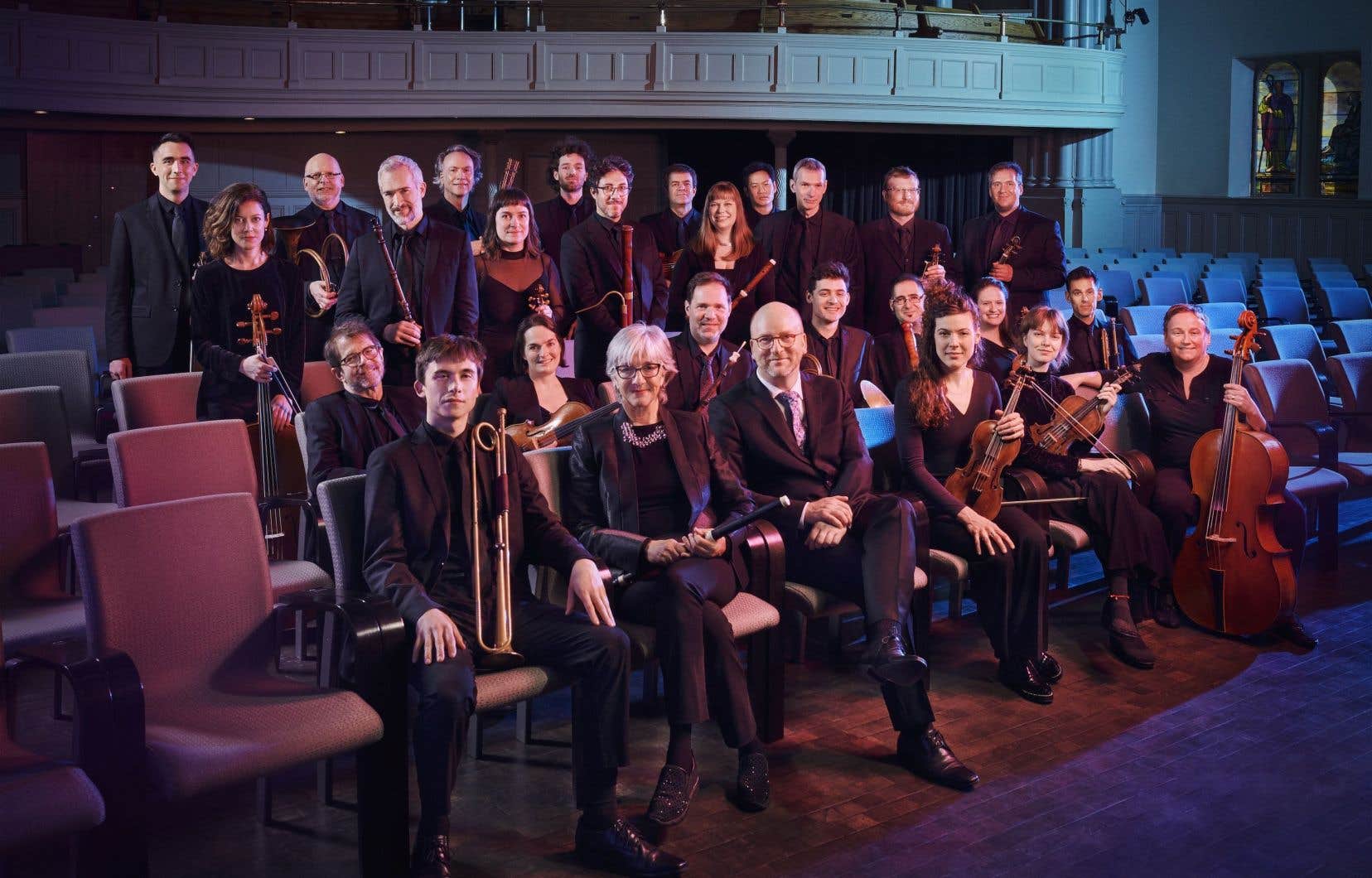Arion Baroque Orchestra opens its season this weekend with its musical director Mathieu Lussier and pianist Élisabeth Pion in a program whose highlight is the recreation of the Piano Concerto No. 1 by Hélène de Montgeroult.
We have spoken to you several times about Hélène de Montgeroult (1764-1836), notably since a disc published by Edna Stern, who also played this composer at the Bourgie Hall.
Featured instrument
It seems that there are some interesting things to read on the subject in program notes. But Arion innovates greatly in the jungle and the saga of concert programs which has been going on for a year: spectators receive a leaflet with the titles of the works and a QR code, but said code is not readable with our usual application (on Android, while an iPhone decrypts it well).
In any case, as the PDF of the program is not on the ensemble’s website and the room is in complete darkness, we wonder when and how we should become aware of this edifying literature which would enlighten our listening.
As for the musical experience, we can draw a parallel between the concert and the review of the complete Montgeroult Sonatas in today’s DMag. The instrument contributes greatly to the character of the music and with the loan of an exceptional 1826 Broadwood pianoforte from patron Jacques Marchand for the occasion, Élisabeth Pion truly plays on an enchanted stream of sound. This instrument is one of the most beautiful specimens existing on Quebec soil, all instruments combined.
As for the concerto, it unfolds in a rather Mozartian universe. It is in fact the clean adaptation, on keyboard and with revised orchestration, of various violin concertos by Viotti. The 2nd movement is a pleasant, varied ritornello, while the final Allegretto is a rondo so effective that it begs to be encored in concert.
Thanks to an Apple application we were able to access the instructions which tell us that there are four concertos of this type, all copied from Viotti. Pion, Lussier and Arion are going to record this one and they are right: the rediscovery is remarkable. Mathieu Lussier even created a sort of “real-fake” work by Montgeroult as a bonus by “tinkering” with an opening, “The Empress” on the live-slow-live format. It works well.
Sad decal
But there was also Mozart on the program. During the 26th Symphony we told ourselves that we didn’t recognize much of it and that with such an astringent sound and such balances in favor of the winds, we were thinking more of some symphony by Kozeluch or another Bohemian composer.
But the Piano Concerto in C minor K. 491 it is a work that does not forgive nonsense. And there we were really wondering what was going on. Is it the attendance, this summer at Domaine Forget, of Julien Chauvin, author of a grueling concert at Arion at the end of last season, which has rubbed off on Mathieu Lussier to this extent? On social networks we use the acronym “OMG” as an interjection, which we could Frenchify, here, as “omnipotent bad taste”.
Compared to Chauvin, Lussier’s direction has a huge advantage: the strings do not sound emaciated but rather warm and sculpted by numerous nuances when listening to the pianoforte. But, then, behind, at the level of the woods! It was: “Go ahead Mimile, let loose so we can hear you for real!” » But the Bourgie room is not, it is not Wilfried-Pelletier and the 24th of Mozart it is not the Lord of the Rings !
The principle of a concerto (from “ concertare », dialogue) by Mozart is notably a discussion between the woodwinds and the keyboard. It would have taken not a Broadwood played all in lace by Élisabeth Pion, but a Steinway, a Yamaha, or, better still, a Kawai, operated by a sledgehammer, to respond to this din, this din, led primarily by the 1st oboe. It was certainly the most unsightly, unbalanced and hideous Mozart concerto accompaniment experienced to date in my entire life, which is beginning to lengthen.
Poor pianist, who had fun instilling the 5th Symphony by Beethoven (also in C minor) in the cadence of its 1st movement. We do not know if she did it to emphasize the fact that the 24th Concertoas the 22nd is quite pre-Beethovenian, or if she improvised that to make fun of the sonic pounding going on behind her.
Mozart and Montgeroult
Mozart: Symphony No. 26. Montgeroult: Piano Concerto No. 1. Montgeroult: Overture “The Empress”. Mozart: Piano Concerto No. 24, K. 491. Élisabeth Pion (Broadwood fortepiano, 1826, Marchand coll.), Arion, Mathieu Lussier. Bourgie Hall, Friday October 6, repeats Saturday 4 p.m., Sunday 2:30 p.m.
